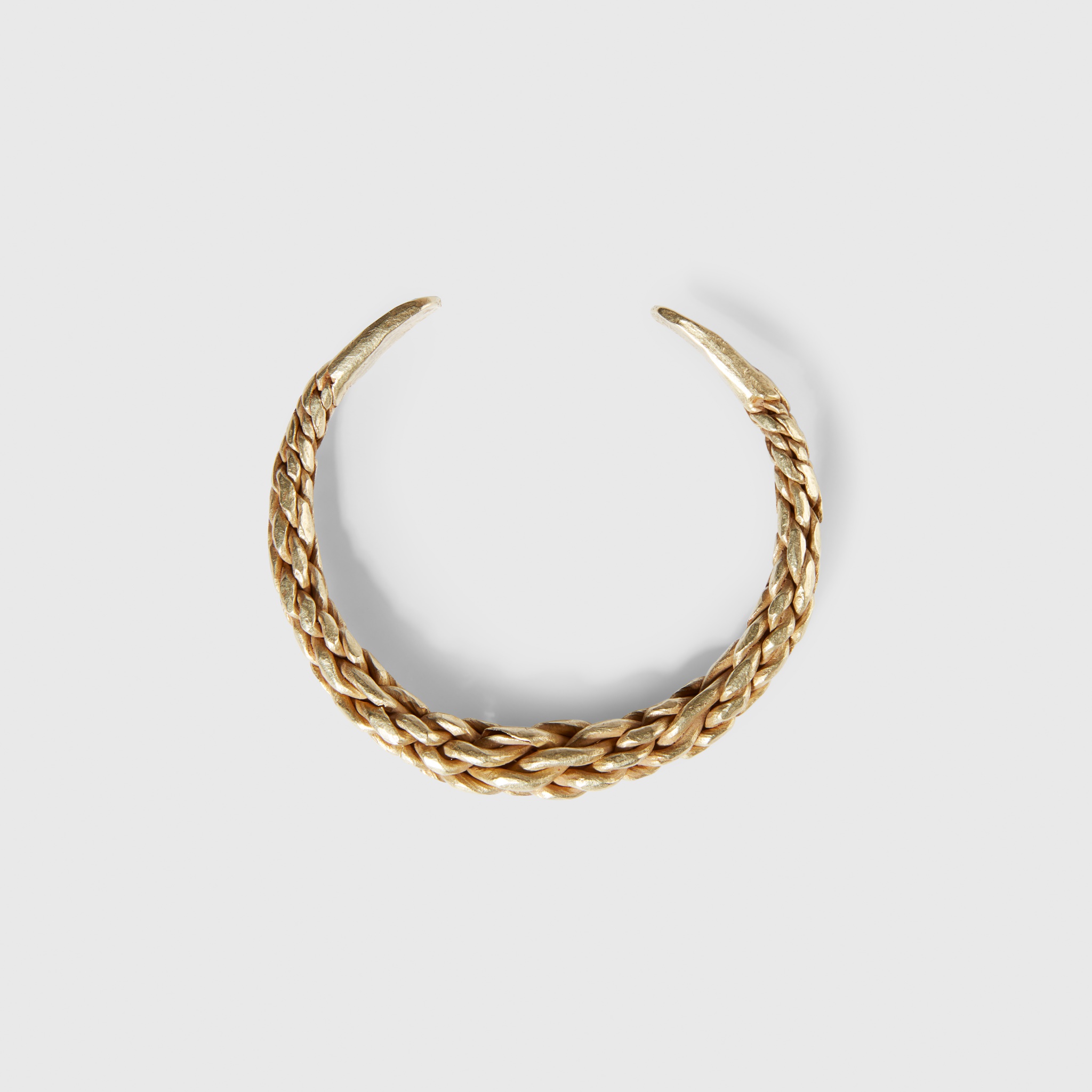VIKING BRAIDED GOLD PENNANULAR BRACELET
EASTERN SCANDINAVIA OR THE BALTIC, EARLY 2ND MILLENNIUM A.D.
£5,292
Auction: 31 May 2023 at 15:00 BST
Description
gold, formed of a series of interwoven strands combining and tapering at the edges to form solid flat terminals stamped with triangular decorative elements
Dimensions
7.5cm diameter
Provenance
Provenance:
Freeman and Sear, Los Angeles
The Hall Family Collection
Fortuna Fine Arts
Private collection, United Kingdom, acquired from the above, a copy of the original invoice to be included with the item
Footnote
Note:
Please note that this item has been studied and assessed by experts at the Jorvik Viking Museum, York.
During the Viking era, both men and women wore jewellery, typically made from bronze or silver, with gold being reserved for the elite. At the onset of the Viking era in 800 A.D., the jewellery was characterized by minimalistic designs. However, as techniques evolved and Vikings encountered new cultures through exploration and raiding, jewellery became increasingly intricate, incorporating designs from these cultures. Certain families of high social standing began to use ornamentation that was exclusive to their clan, and not to be replicated by others.
Beyond their decorative function and status symbol, jewellery served as a form of currency during this period. Pieces were often broken up into smaller parts to accommodate transactions, resulting in complete pieces becoming rare.

